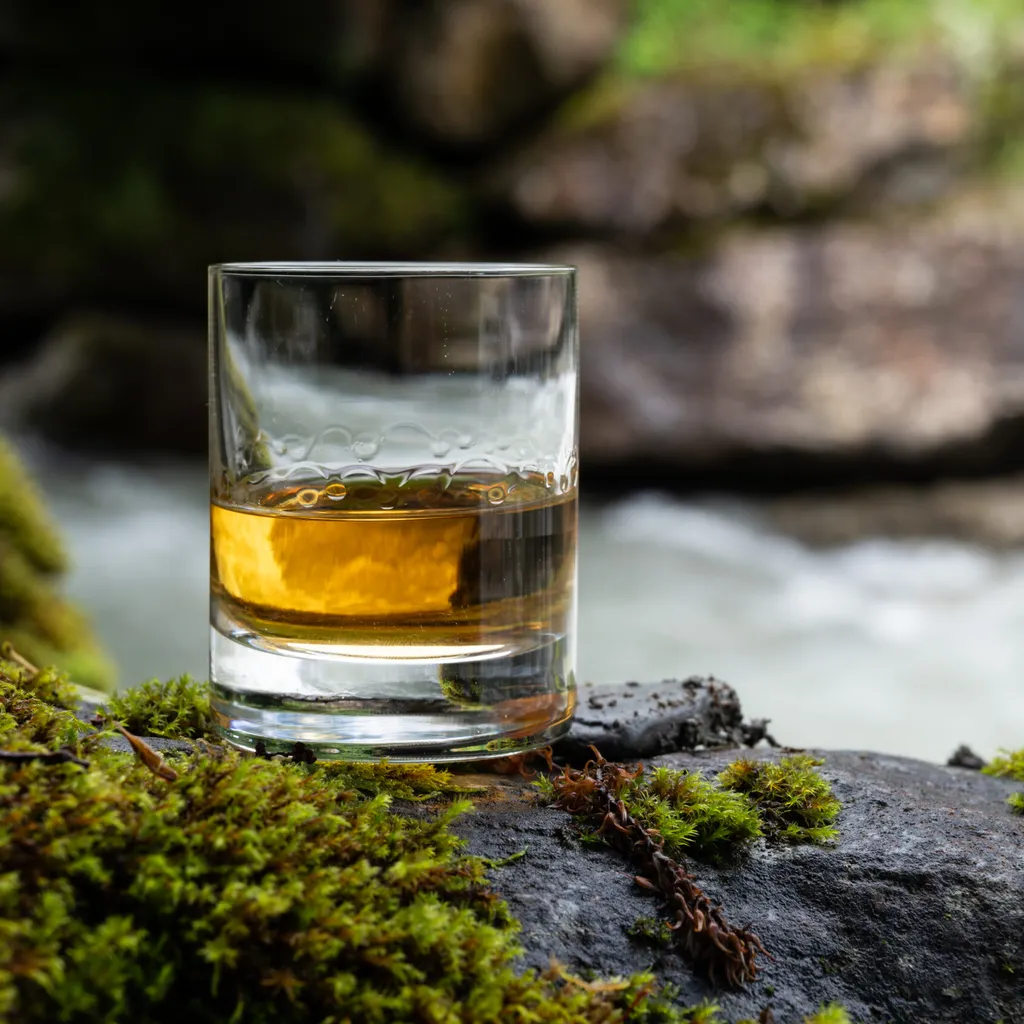The Isle of Skye coastline twists and turns for 370 miles, taking in a series of peninsulas divided by slender sea lochs. Towering above the lochs are some of Britain’s most impressive mountains, including the Cuillin, and some of its most improbable geological features, most notably the weird and wonderful basalt formations on the Trotternish peninsula.
Despite having been linked to the Scottish mainland’s west coast by a 1.5-mile road bridge since 1995, the northernmost of the Inner Hebrides retains its island feel – separate and distinct, all the way from its southernmost tip at the Point of Sleat to Balmaqueen, almost 70 miles to the north.
It’s this breathtaking landscape combined with its wildlife, history and Hebridean culture that makes Skye such an exciting and fascinating destination for visitors. Just remember that, considering the size of the island and the variety of attractions on offer, one trip will never be enough…
- Scottish islands guide: best to visit and how to get there
- Best islands to visit in the UK
- Scotland’s best walks
Visiting the Isle of Skye
Scotland’s second largest island isn’t just about natural wonders – Skye has been inhabited for millennia and humans have been leaving their mark here since prehistoric times.
Archaeological sites scattered across the island include burial cairns, souterrains and brochs, or Iron Age roundhouses. More recent history is brought to life in Skye’s many castles, museums and abandoned villages such as Boreraig and Suisnish.
The main settlements on the island today are Broadford, Dunvegan, Kyleakin and the harbourside capital, Portree – all of which have a wide range of facilities that make them great bases for touring.
Things to do on the Isle of Skye
Old Man of Storr
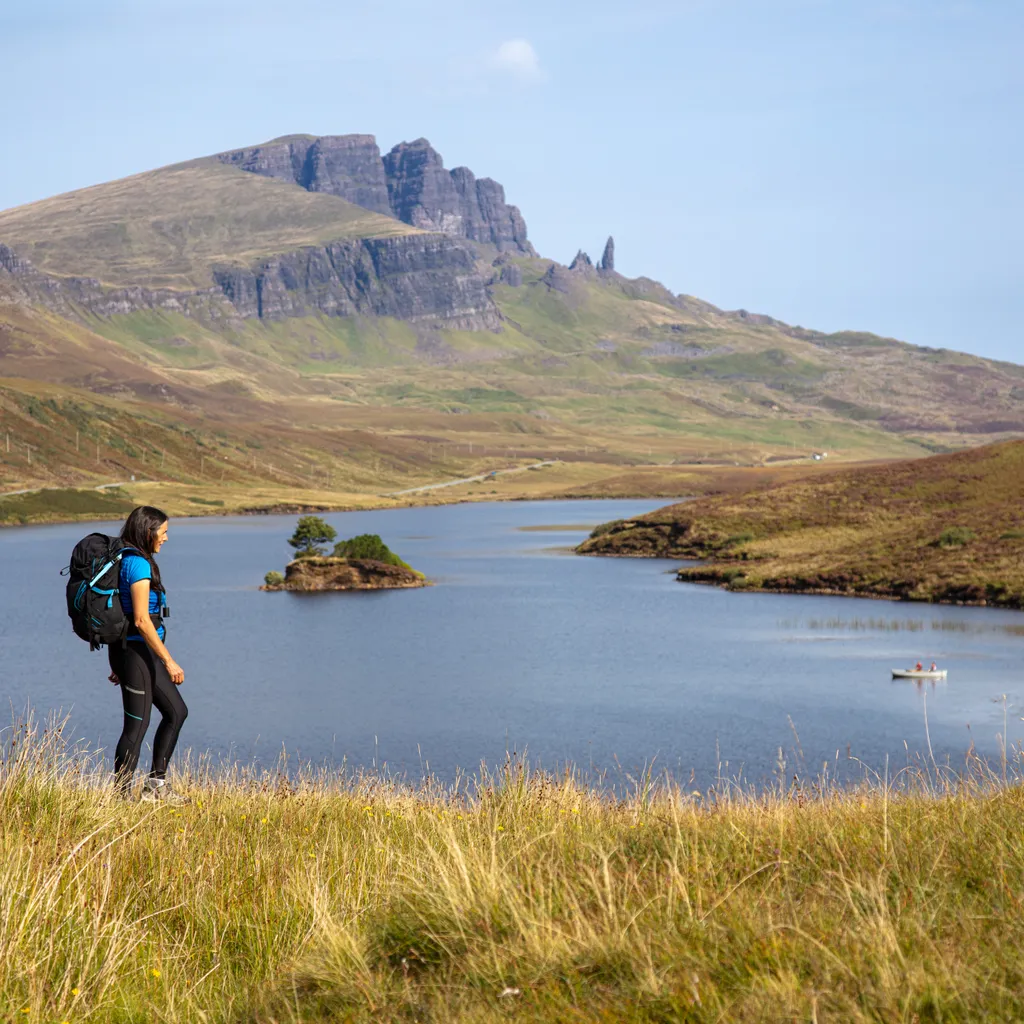
Probably the most photographed feature on Skye, the Old Man of Storr is a 160ft-tall pinnacle of rock that forms part of a massive geological marvel. The basalt lava that resulted from volcanic eruptions 60 million years ago is sliding imperceptibly towards the sea. It’s been doing this for millennia, creating towers and other strangely shaped rocks that sit just to the east of the flat-topped, grassy ridge from which they were born.
The Old Man himself squats, with other basalt formations, at the foot of dark cliffs that rise to the 719m summit of The Storr. A well-used footpath leads from the car park – about 7 miles north of Portree – to the base of the Old Man. It’s just over one mile long and you can continue beyond to explore more of this awesome scenery. You won’t be climbing the pinnacle itself though. To put the challenge involved into perspective, this crumbly tower wasn’t ‘conquered’ until two years after climbers first reached the top of Everest.
Quiraing

Fourteen miles north of the The Storr is another surreal landscape that forms part of the same 18-mile-long series of landslips. The Quiraing is a busy spot, but it’s quieter than its neighbour. It provides an incredible sense of the movement that has created this amazing spectacle; in places, it’s possible to imagine how the free-standing formations could slot back into the main ridge like a jigsaw puzzle.
A single-track road climbs from the A855 near Staffin, via hairpin bends, to a car park. From here, a good path leads across the cliff-face to The Prison, a huge chunk of rock that’s become detached from the main basalt ridge and now resembles… well, a prison. A clamber up steep slopes then takes visitors to the base of The Needle. Standing between this pinnacle and the cliffs, it's impossible not to feel dwarfed – both by the size of everything surrounding you and by the time-scales involved. These rocks predate humans by many millions of years.
The Skye Museum of Island Life
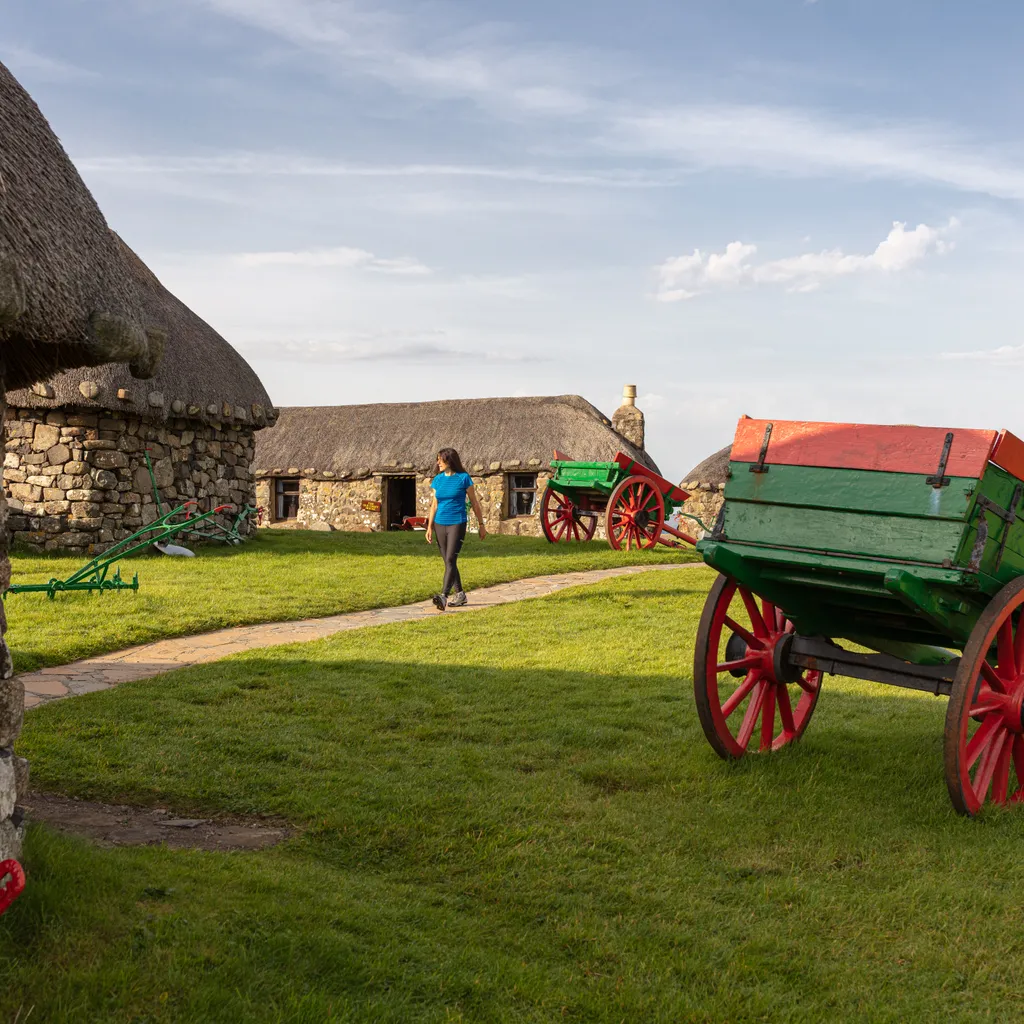
Further north on the Trotternish peninsula, 11 miles from the Quiraing, the Skye Museum of Island Life at Kilmuir provides an insight into one aspect of human existence on the island – the life of crofters. A crofting township has been recreated, consisting of a series of small, thatched cottages overlooking The Minch, the body of water separating Skye from the Outer Hebrides.
Each cottage, or blackhouse, depicts a different aspect of island life at the end of the 19th century and contains furniture, agricultural tools, instruments involved in weaving and mannequins at work. Particularly engrossing are the grainy, black-and-white videos showing crofters cutting peat or milking cows, and travelling families, known as tinkers or tinsmiths, setting up their tents.
The nearby Kilmuir Cemetery contains the grave of Flora MacDonald, who helped Bonnie Prince Charlie flee from government troops after the Battle of Culloden. Panels in the museum tell the story of this escapade, including how Flora dressed the prince in her maid’s clothes to disguise him.
Fairy Pools
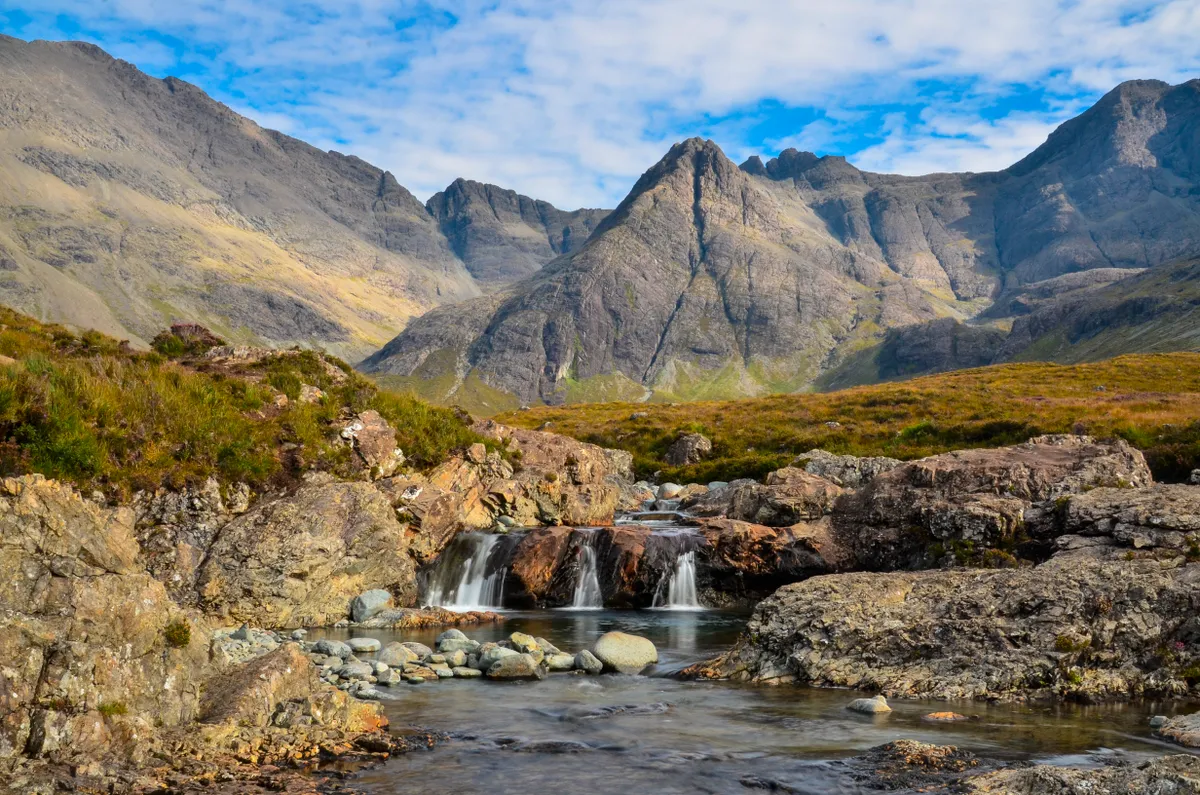
Ethereal beings would not seem out of place on Skye’s jagged ridges, pinnacles and cliffs. And it’s easy to imagine fairies inhabiting the vibrant turquoise pools near Glen Brittle, at the foot of the Black Cuillin mountains.
The crystal-clear, water-carved Fairy Pools are fed – and ceaselessly enlarged – by a string of small waterfalls on a burn that drains one of the Cuillin’s vast ice-flattened corries. Britain’s finest and most formidable mountain scenery forms a backdrop to the pools, where the Black Cuillin ridge extends serpent-like for some seven miles.
The legend goes that a local Clan MacLeod chief of old married a fairy princess, giving rise to many fairy place names on the Isle of Skye. It is also said that Fairy Pools attracted selkies. These mythological creatures, disguised as large seals during the day, would come to the beach at the foot of Glen Brittle where they would shed their skins and change into human form for the night, to bathe in the pools under the light of a full moon.
To visit Fairy Pools, assuming you are not coming ashore as a selkie, make your way along the enchanting single-track road that runs down Glen Brittle, east of Carbost. From the Glumagan Na Sithichean car park, follow the path on the opposite side of the road towards the burn, known as Allt Coir’ a’ Mhadaidh. Ignore an early fork to the left and continue strenuously uphill on the footpath as it runs alongside the lively burn for 1.5 miles.
Dunvegan Castle and Gardens
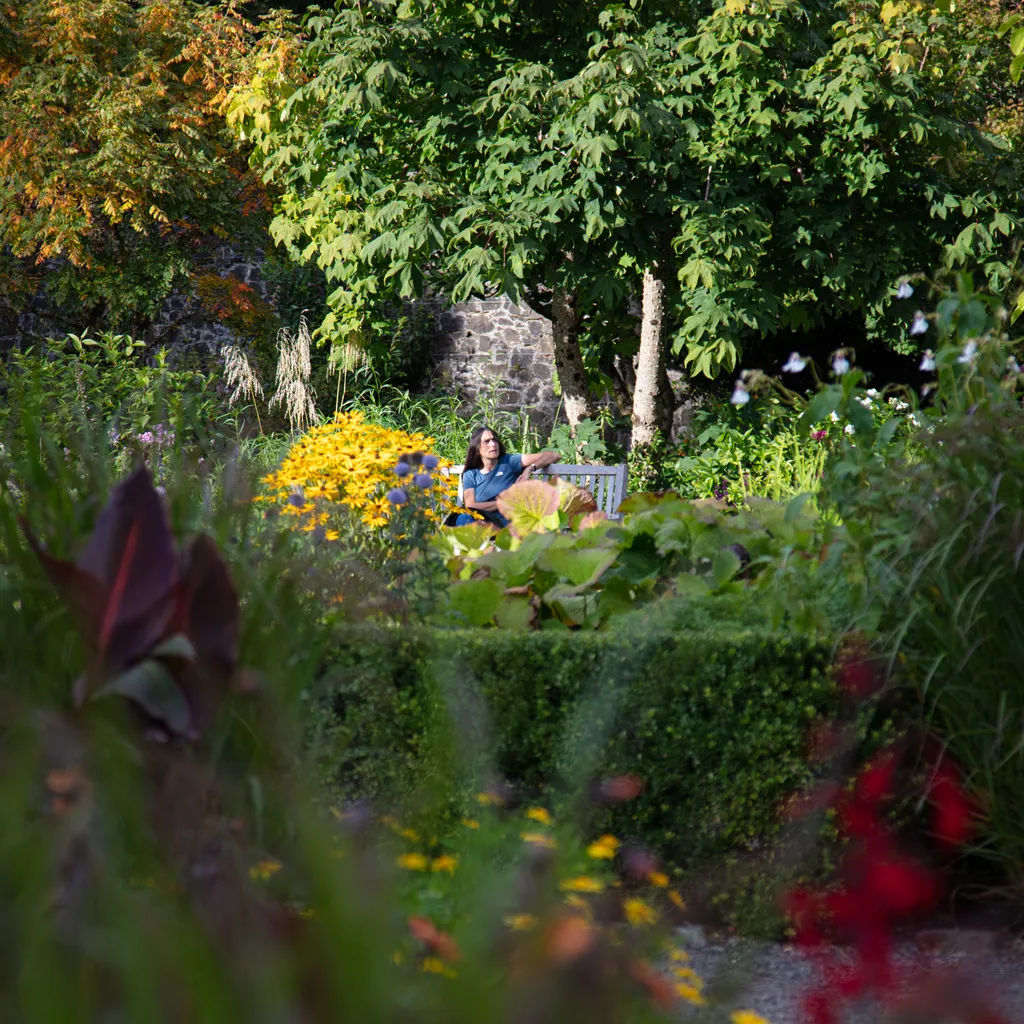
The story of Bonnie Prince Charlie continues at Dunvegan Castle – a 33-mile drive south-west of Kilmuir – where artefacts such as a lock of his hair and some of Flora’s clothing are on display. This lochside fortress has been the home of clan MacLeod chieftains for 800 years, although the exterior of the building that exists today dates from Victorian times. While some rooms remain private, many are open to the public, and contain paintings, period furniture and heirlooms such as the Fairy Flag. Legend has it that the flag has the power to save the clan. MacLeod airmen even carried photos of it while flying sorties during World War Two.
Trails wind their way through the restored formal gardens – a water garden complete with streams and cascades; the Round Garden with wildflowers and a monkey puzzle tree; and a walled garden sporting colourful herbaceous borders and glasshouse. Take a 25-minute boat trip from the castle to see seals basking on the islets in Loch Dunvegan.
Dun Beag Broch
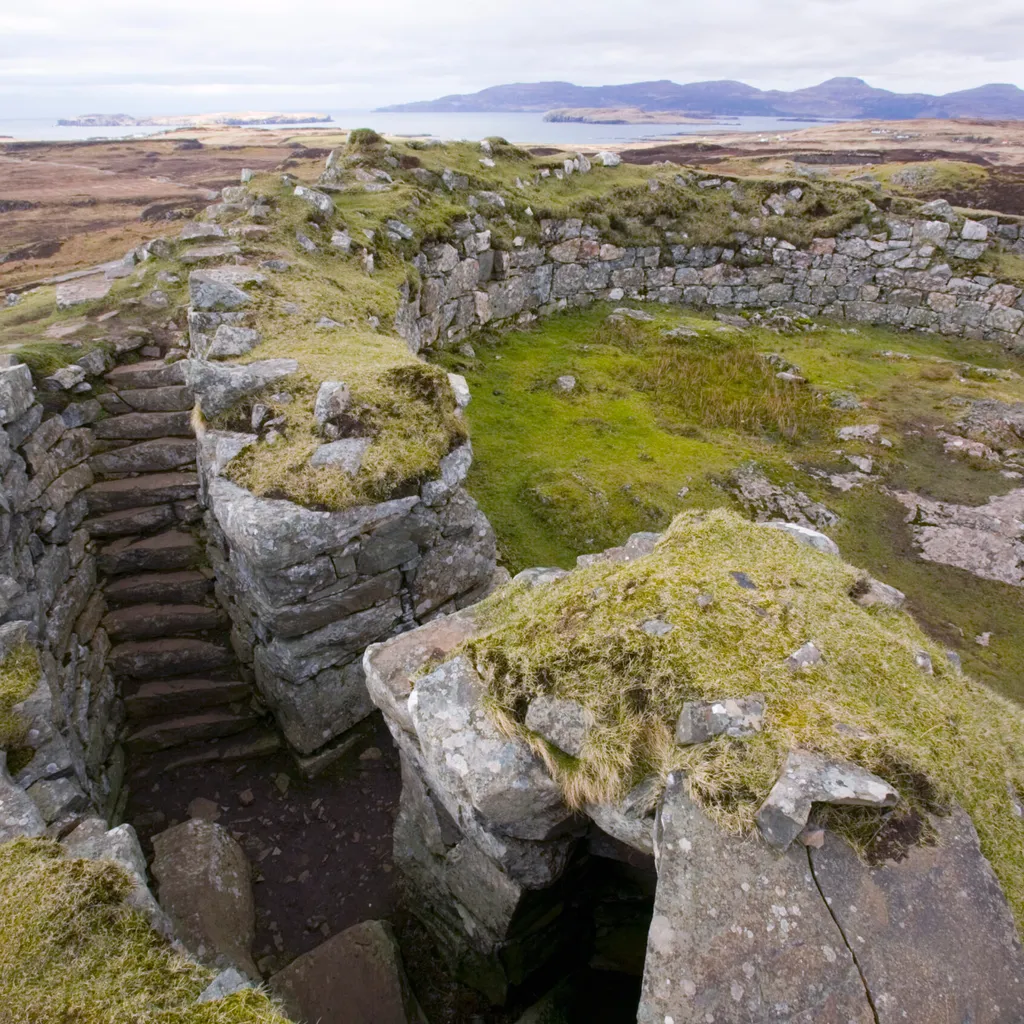
From Dunvegan village, the A863 winds south-east towards Sligachan. Beside the road, overlooking Loch Bracadale, are the remains of an Iron Age circular tower. Built about 2000 years ago, Dun Beag is one of Skye’s best preserved brochs.
A five-minute walk from the roadside parking leads to the steep-sided, rocky knoll on which the atmospheric ruins sit. After clambering to the top, modern visitors enter via a single passageway through the double-skin walls. Two small chambers still exist near this entrance as does part of a dark, stone staircase within the concentric walls. This once led to the upper levels where the family would probably have resided, while their livestock occupied the ground floor.
The site has a quiet, unspoilt feel to it – where the sheep grazing the knoll often outnumber tourists.
Boreraig and Suisnish

These clearance villages can be visited on a 10-mile circular walk that starts from the ruined church at Kilchrist, 31 miles from Dun Beag – on the road from Broadford to Elgol. A good path follows an old tramway, the Marble Line, that served the now defunct marble quarry.
Continuing across open moorland, the route then eases its way down to the shores of Loch Eishort. Here, on a verdant shelf, the walls of several blackhouses hide among the bracken. The crofters who once eked out an existence in this remote but idyllic spot were evicted by Lord MacDonald in 1853 to make way for sheep.
A victim of the same push for profits over people, Suisnish is reached by a beautiful path along the loch shore. Watch for otters in the water here, although eyes will later be drawn to the rugged mountain scenery that forms a magnificent backdrop to the abandoned village. Bla Bheinn lies on the far side of Loch Slapin, with the Cuillin ridge further west.
Loch Coruisk

The sawtooth Cuillin ridge, regarded as the most demanding mountain terrain in the UK, is the domain of experienced mountaineers only. The full traverse takes two days and involves an exposed, overnight bivouac high up on the ridge.
Lesser mortals, though, can enjoy this spectacular range from sea level – from the loch that lies at the heart of it. Loch Coruisk can be reached by walking the 7-mile path through the midge-infested Glen Sligachan or, better still, by boat. The single-track B8083 continues beyond Kilchrist for another 12 miles to reach Elgol, the embarkation point for the breathtaking 45-minute journey in the company of sea eagles, dolphins, seals and sometimes even whales.
Most trips allow passengers to land and walk up to the loch – time to unpack a picnic, enjoy a wild swim or simply stand and stare at those majestic peaks that almost completely encircle this serene body of water. Experienced scramblers and those accompanied by mountain guides will push on into more adventurous terrain.
Isle of Skye accommodation
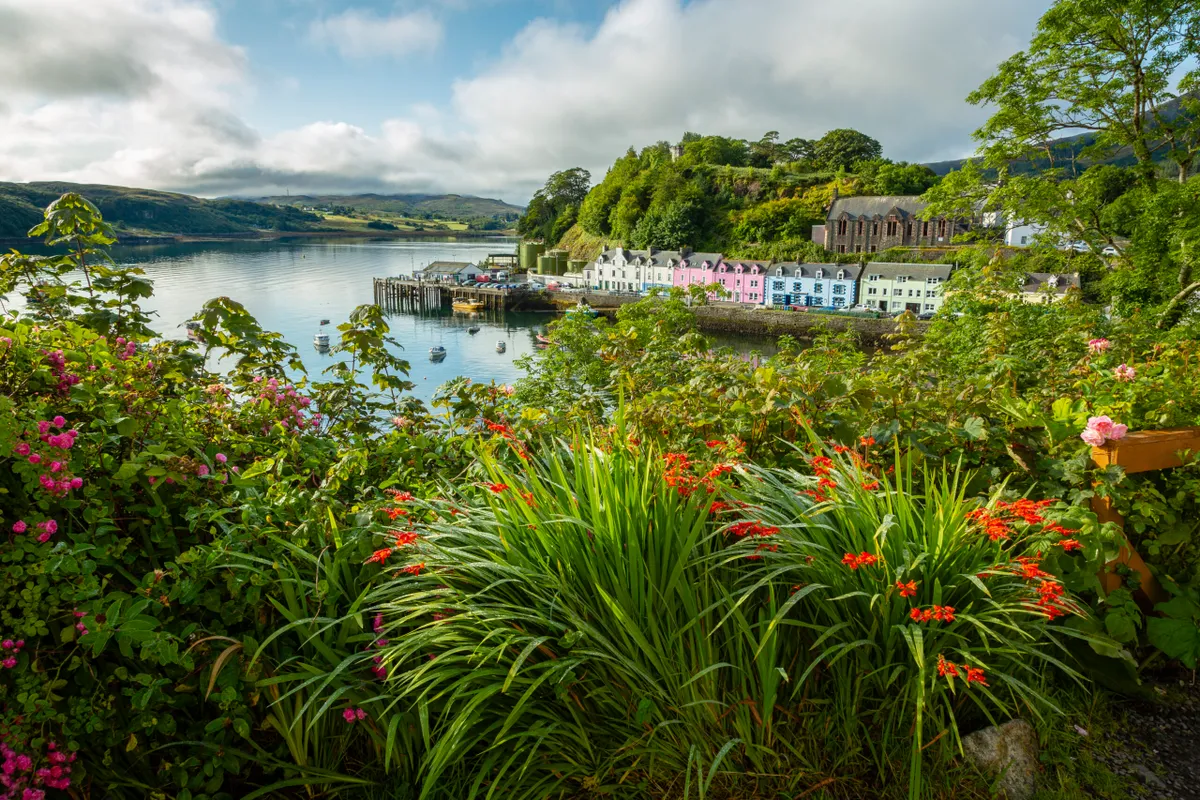
Skye is an astounding island to visit – and those who do often find it difficult to leave. With so much to see, finding the right accommodation from which to explore is often high on the planning list for holiday goers. So, where is the best place for you?
To help with your planning, we've picked 15 breathtaking places to stay on the Isle of Skye, from luxury hotels and holiday cottages to perfect camping grounds and cosy inns.
Isle of Skye ferry
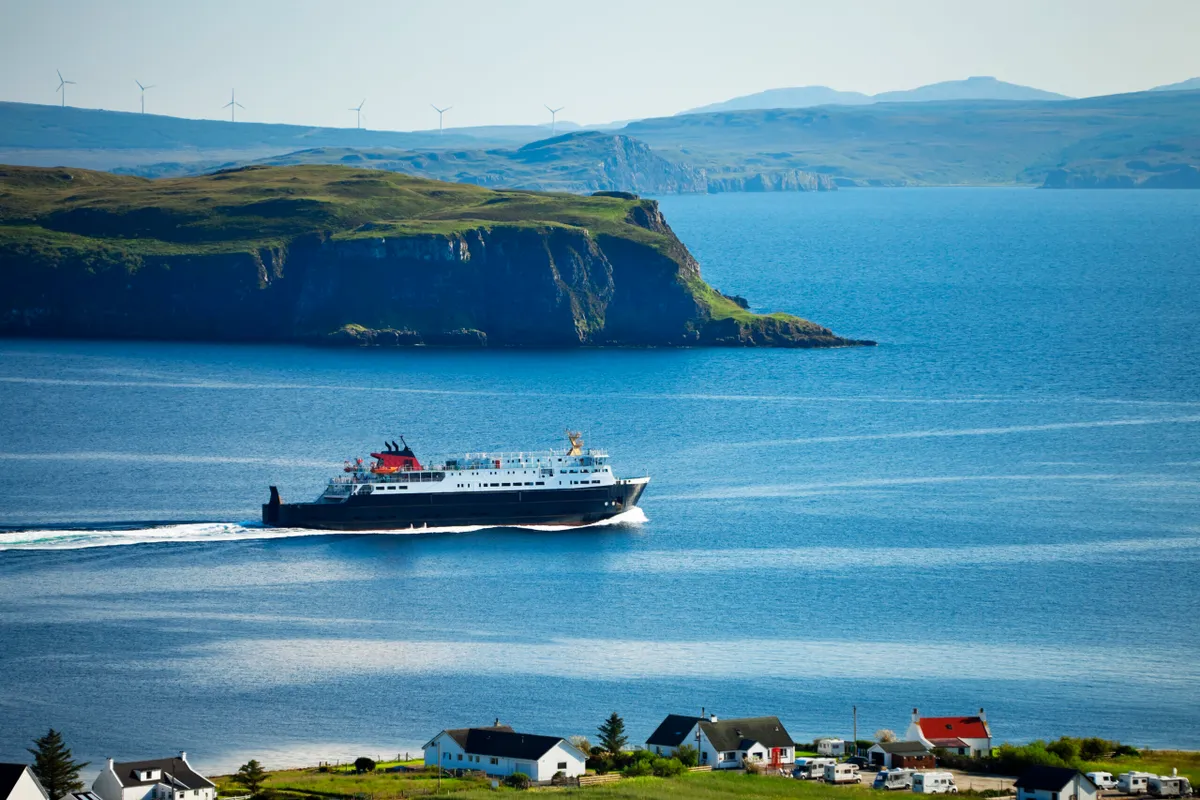
Of the main Hebridean islands, Skye is the closest to the mainland. It can be reached by crossing the road bridge (no toll) from Kyle of Lochalsh, 74 miles north-west of Fort William.
Alternatively, a CalMac vehicle ferry runs from Mallaig on the mainland to Armadale all year round. The crossing takes 30 minutes. With Mallaig being the western terminus of the West Highland Line, this is a good option for cyclists and foot passengers.
For a quirky crossing between April and October, a manually operated, turntable ferry operates out of Glenelg. With capacity for just six cars, it takes no more than 15 minutes to reach the island.
Regular CalMac services also operate between Uig on Skye and the Outer Hebrides.
Isle of Skye distilleries
There are four Isle of Skye distilleries, including the world-famous whisky distiller Talisker and the independent Torabhaig distillery. Drink them in with our Isle of Skye whisky tour.
